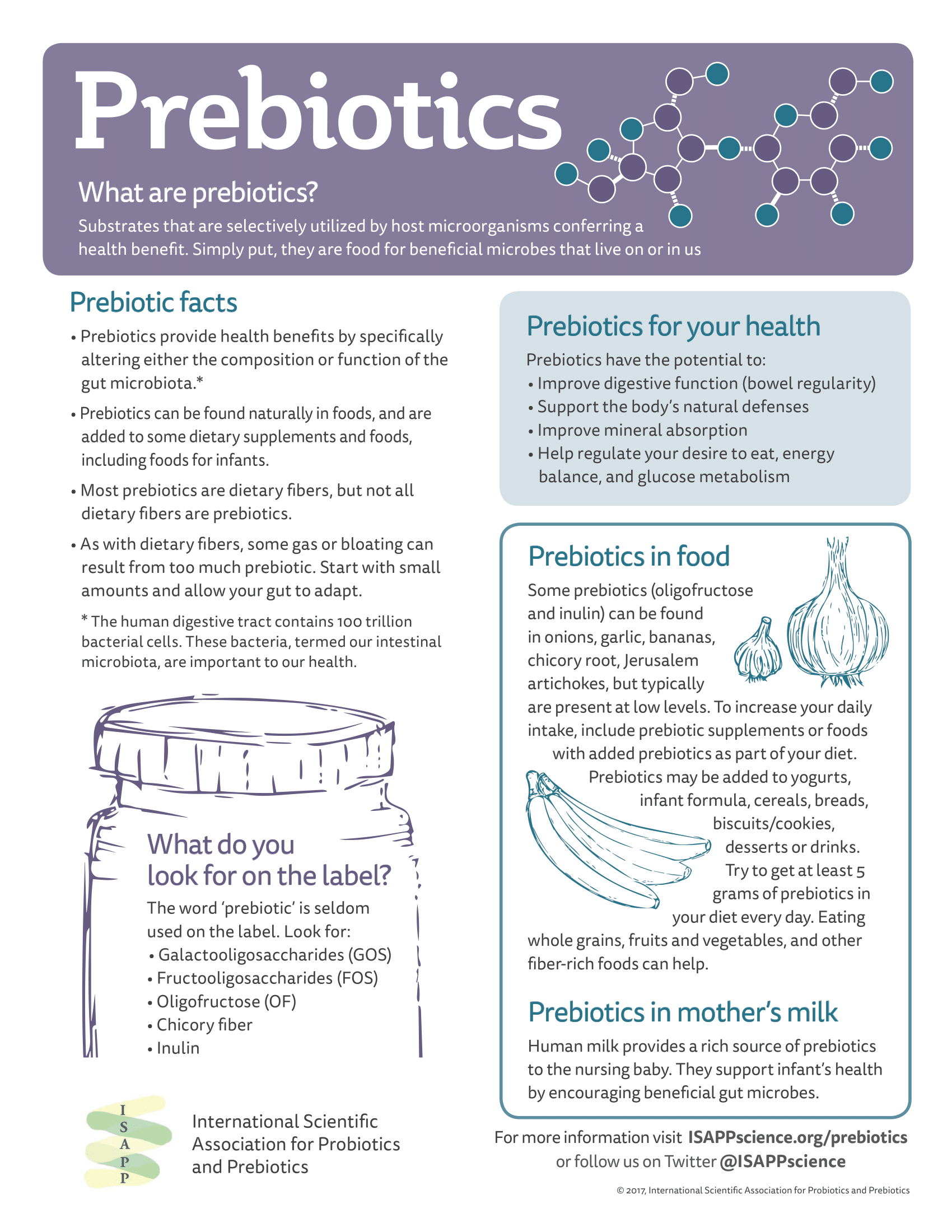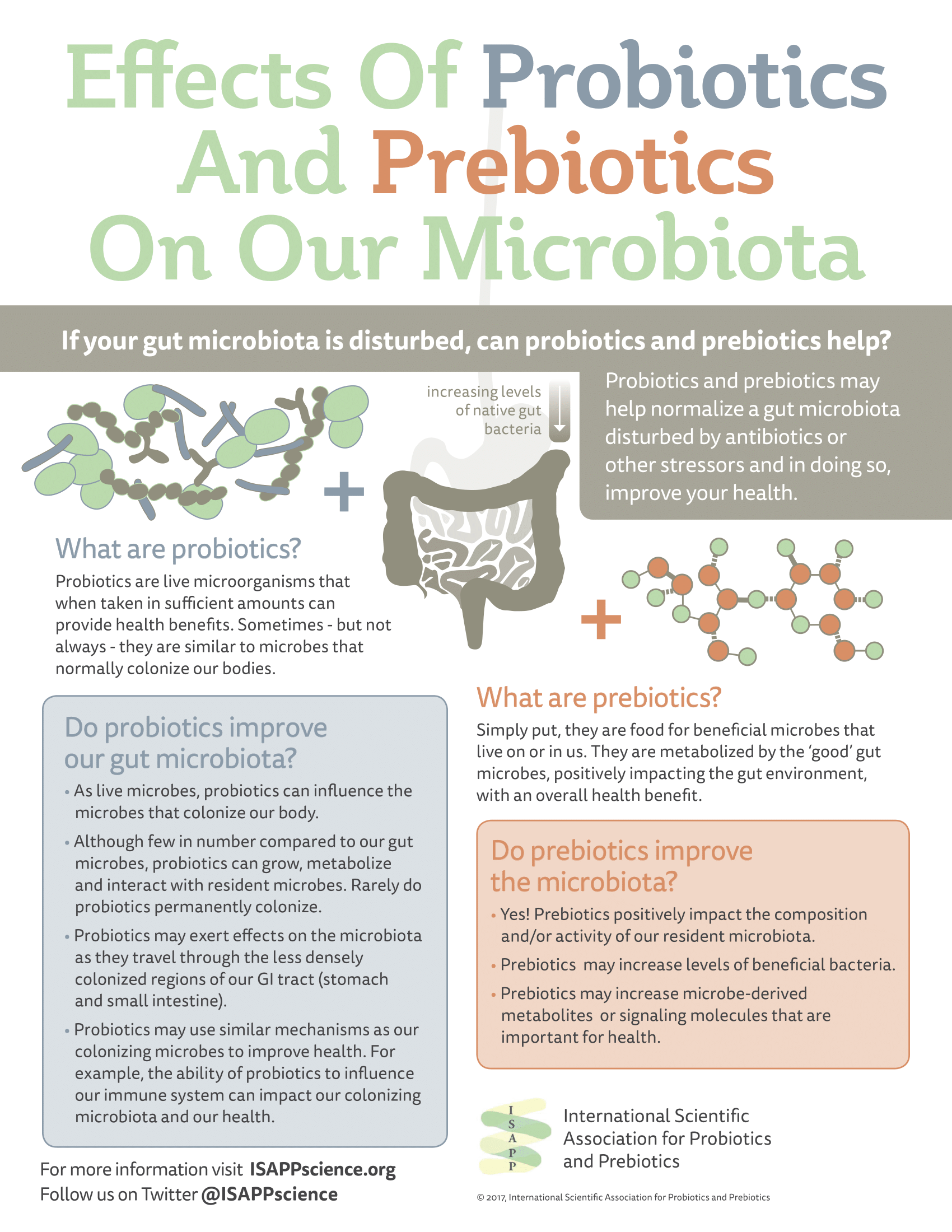The concept of a ‘prebiotic’ was put forward in 1995 by Gibson and Roberfroid in their scientific publication called “Dietary modulation of the human colonic microbiota: Introducing the concept of prebiotics”. In the decades that followed, scientific discussions about prebiotics tended to focus on identifying substrates that target health-promoting groups of bacteria in the gut: usually, bifidobacteria and lactobacilli.
The current scientific definition of a prebiotic was developed by a panel of experts in microbiology, nutrition, and clinical research convened by ISAPP in 2016. This current consensus definition is: “a substrate that is selectively utilized by host microorganisms conferring a health benefit”. Thus, the concept includes three essential parts: a substance, a physiologically beneficial effect, and a microbiota-mediated mechanism.
Prebiotics are frequently equated with dietary fibers, but only a subset of dietary fibers actually qualify as prebiotics, and indeed, prebiotics may derive from non-fiber substances, such as polyphenols. According to the scientific consensus definition, a prebiotic compound must confer a beneficial physiological effect on the host and that effect should derive at least in part from utilization of the compound by resident microbes. Although early prebiotics were directed at resident bifidobacteria and lactobacilli, research on the microbiome has shed light on other groups of microbes associated with health that may be targets for prebiotics. However to qualify under this definition, the prebiotic substance must affect a limited group of microorganisms in the host rather than the entire microbial ecosystem, thereby meeting the criterion of being ‘selectively’ utilized.
Prebiotics may be present naturally or in synthesized forms. The majority of research into their health effects has focused on isolated substances (to allow for tighter control of substance and dose), and less on prebiotics as part of whole plant foods.
Prebiotics have been studied for certain health effects, such as reduction of infections, cardiometabolic health, mineral availability, and immune modulation. The most commonly-studied prebiotics are the soluble fibers inulin, fructooligosaccharides (FOS), galactooligosaccharides (GOS), and more recently human milk oligosaccharides (HMOs). While the prebiotic substances with the most well-documented health effects to date are fermentable carbohydrates in the gut, the consensus definition allows for a broad range of substances targeting different host niches (such as the mouth, skin, or urogenital tract) to be considered prebiotics, given appropriate scientific support.
See these reviews (here and here) for summaries of prebiotic health benefits. At present, there are no official dietary recommendations for ‘adequate intake’ or ‘recommended daily allowance’ for prebiotics in healthy individuals. Most prebiotics for the gut require an oral dose of at least 3 grams per day or more to confer a benefit. Typically, around 5 grams is the target for FOS and GOS in the daily diet—and this includes dietary sources of prebiotics.
The recommended daily amount of fiber is 28 g/day, based on 2000 kcal/day diet.
See here for resources on prebiotics and their efficacy for various conditions.
Dietary / nutritional use of prebiotics is covered in ISAPP’s continuing education course for dietitians, available through Today’s Dietitian.








